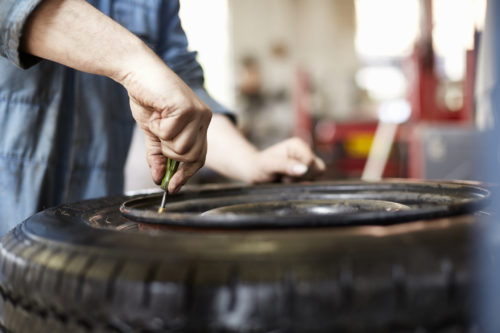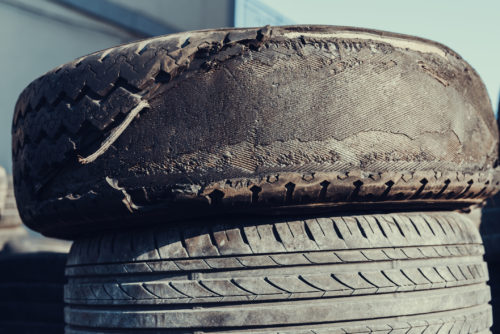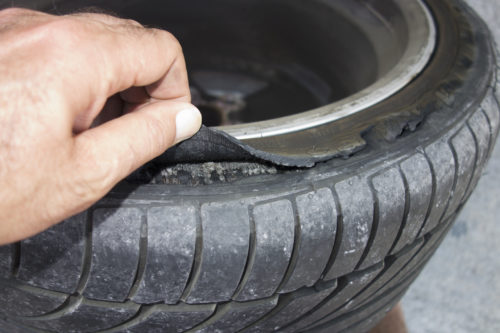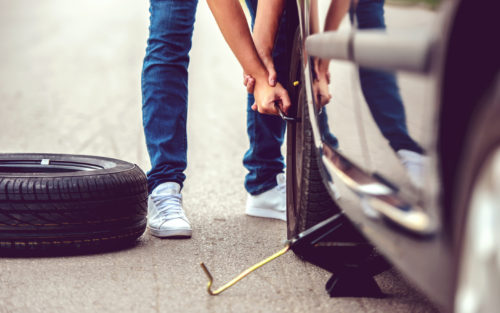Types Of Tyre Damage And How To Avoid Them
Your car has a lot of important components, but the tyres – as the sole point of contact between the vehicle and the road – are arguably near in the top of that list. When in good condition, tyres provide grip, comfort, and braking ability. When in poor condition, the same tyres can adversely affect handling, ride quality, steering, and braking ability. Tyres bear the weight of the car and its occupants on the one hand, and the abrasive frictional forces from the road on the other. Over thousands of miles, they naturally wear out, but this process of wear is sometimes accelerated through improper usage on part of the driver.
Tyre damage can take several forms, such as punctures, cracks, sidewall damage, irregular tread wear, and bursts. Much of this damage cannot be rectified and requires replacement of the tyre. Checking for tyre the damage, in most cases, is easy – a look at your tyres should indicate most glaring issues. Cracks, uneven tread wear, and sidewall damage can all be checked in this way. A puncture can be visually identified if one or more tyres have significantly less air or identified while driving by way of unexpected handling or lopsided steering heaviness. A tyre burst, being an extreme event, will make itself known by a loud, explosion-like noise followed by sudden changes in the steering and handling characteristics of the car.
To avoid the greatest dangers of tyre damage, examine them your tyres closely every few weeks, immediately after long drives, or if you drive over rough terrain. Have them professionally checked every 10,000 km. You should check your tyre pressure at least once a month or as frequently as once a week if you drive a lot.
To identify tyre damage, it helps to understand the various issues that can happen:
PUNCTURES

Punctures are perhaps the most, commonly, understood types of tyre damage. A puncture happens when a sharp foreign object – a stray nail, piece of glass, bit of gravel, or even a crack in the road surface – pierces through the outer wall of the tyre, creating an outlet for the air inside. This loss of air creates a loss of air pressure, leading to poor steering and handling, accelerated damage to the tyre, and its complete tyre failure in extreme cases. If you suspect a puncture, stop the car immediately and replace the punctured affected tyre or get it fixed. To enable the owners to repair the tyre damage within minutes, Ford has equipped its EcoSport SE variant with an easy to use puncture kit which allows users to fix punctures easily and quickly, without the hassle of removing the tyre from its slot.
CRACKS

Cracks usually appear on the surface of the tyre that is in contact with the road surface and less commonly, on the sidewall. Cracks form because of general wear and tear, driving on poor road surfaces, and in some cases, excessive UV exposure. Minor cracks are a normal consequence of age and aren’t dangerous. However, they will eventually grow into larger cracks, which compromise the structural integrity of the tyre and can lead to dangerous situations like a blow-out. Cracks cannot sustainably be fixed; if you see one or more big cracks in a tyre, your best bet is to replace it.
SIDEWALL DAMAGE

Your tyre’s sidewall is built to handle much stress, but push it too hard for too long, and it can get damaged. Sidewalls typically face two types of damage: bulges and cuts. Bulges are usually a result of impact, such as driving into the kerb or over a speed breaker too fast. This causes the structure of the sidewall to unravel internally, and the air pressure rushes in to create a bulging protrusion. Cuts are caused by impact too but are more dangerous because they increase the chances of a blow-out. Damaged sidewalls are incredibly risky because they have less structural integrity. There’s no real way to fix sidewall damage; replacing the tyre is your safest bet.
UNEVEN TREAD WEAR

As you munch miles, your tyres undergo tread wear, and this is only natural. The problem arises when the tread wear is uneven. Uneven tread wear can be a result of incorrect inflation pressure or misalignment of the wheels. There are different types of uneven tread wear: heel-and-toe wear, centre wear, and one-sided wear. Heel-and-toe wear happens in the regular course of a tyre’s life; it is caused by one side of a tyre tread block wearing out faster than the other. It is only a concern when it occurs in excessive amounts. Centre wear is where the centre tread of the tyre wears out more than the sides, usually caused by driving with overinflated tyres. One-sided wear is a result of wheel misalignment, where one side of the tyre wears out more than the other. Worn out tyres offer poor grip and handling characteristics and are best replaced.
TYRE BURST

A tyre burst (or blow-out) is a dangerous event caused by an inability of the tyre to contain air anymore due to a loss of structural integrity. A burst tyre has a huge impact on the manoeuvrability of a car; in most cases, it renders a car undriveable.
Poor tyre pressures are usually the starting point for any type of unusual tyre damage. Maintaining the pressure recommended by the manufacturer ensures that the tyres perform optimally and minimises irregular wear and tear. It also helps save fuel and keeps you safe on the road. Ford owners can use the FordPass™ mobile app to remotely check their tyre pressures and even receive alerts when the air pressure falls below the optimum level. The ability to check your tyre pressure anywhere and at any time allows you to ensure that your Ford’s tyres are always inflated just right.
If you drive a Ford, you can always Dial-a-Ford (home pick-up and drop car servicing facility) to set up a check-up and service for your vehicle to ensure it is in the best possible state.
There’s a lot more about tyres that one should know. You can also check out how to change a tyre on Ford India’s YouTube channel:
Subscribe to our newsletter
Subscribe to our newsletter to stay upto date with latest news, offers and much more



